Each month, Bob profiles an exceptional mobile photographer currently producing notable work across a variety of subjects and employing a broad range of techniques. Some will be well known within the mobile photography world (exhibiting and selling their work), and others are gifted aficionados of the craft.
This month, Bob interviews Alan Kastner – an artist/photographer who has spent the last 40 years living and working in Tokyo, Japan. His work reflects a variety of styles – from “straight” street photography to slow shutter / impressionistic work. His work has been featured in a number of shows and won awards, and appeared in the 2013 Rocky Nook book “The Art of iPhone Photography”. As an example of Alan’s work, this particular series of photos, taken through the same café window during the course of 2017, is particular striking and intriguing.
BW: Please share your personal and professional background.
AK: Born on the banks of the St. Lawrence River near the Ontario/Quebec border and schooled mostly in Toronto, I have lived in Japan for most of the past four decades. I arrived as a student, gave up academia in 1991 to start a company with some friends, and have earned my keep since the mid-nineties as a freelance writer, copywriter, and translator.
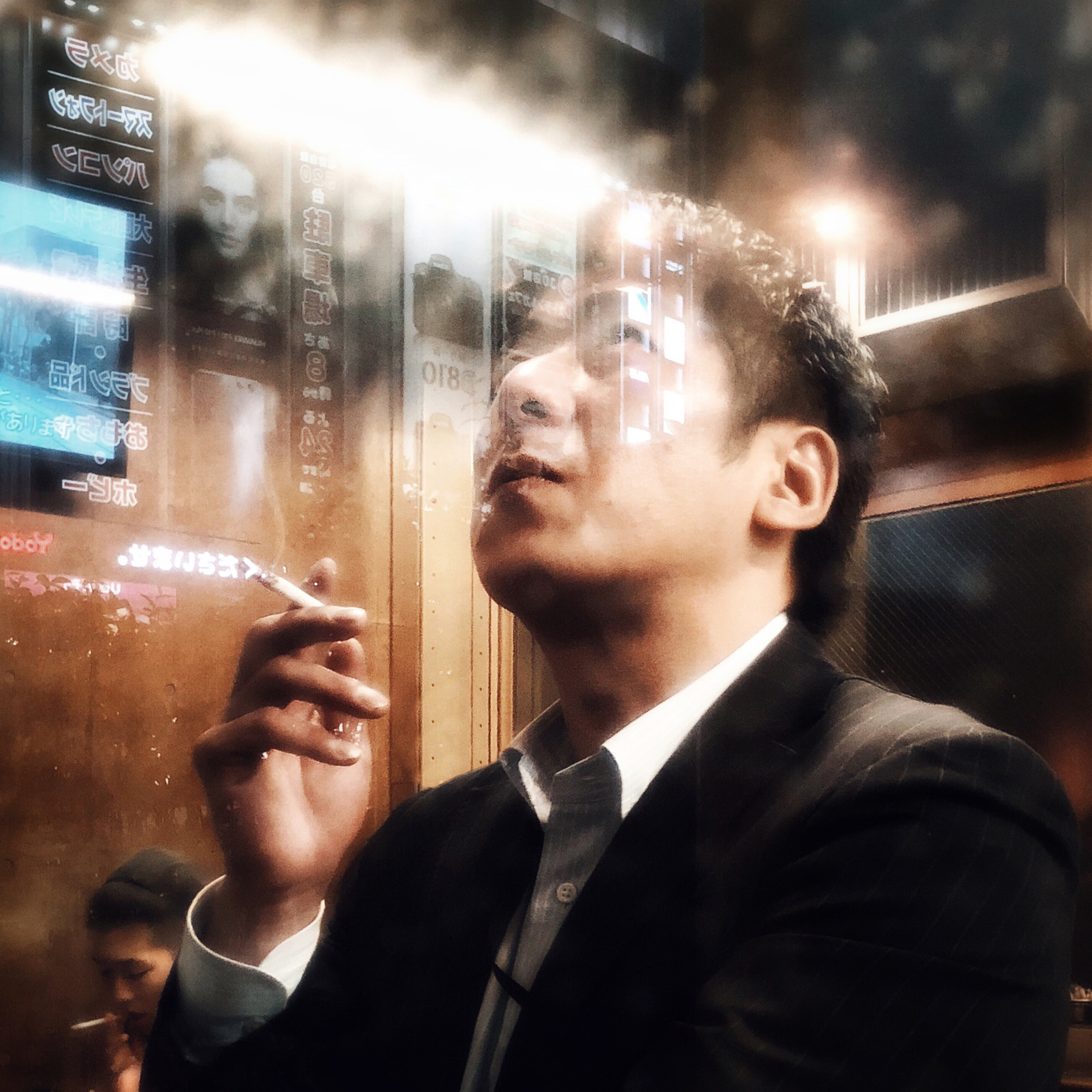
BW: How did you come to develop an interest in mobile photography?
AK: My transition to mobile photography occurred quite naturally.
After working with film and paper in my own darkroom for many years, I began exploring Photoshop and digital imaging by the early 1990s. I then adopted digital cameras into my life when the first consumer models came available around 1995 and stepped up to a DSLR in 2003.
Somewhat jaded by “big glass” and highly aware of the limitations presented by early digital cameras, I didn’t really expect much from my first iPhone’s camera when I bought a 3G in 2008. I took the odd snapshot and downloaded a couple of alternative capture apps at that time. It was only after I upgraded to the 3GS that I started seeing the potential. Concurrently, the editing apps were becoming more plentiful and more powerful. The iPhone 4 started to give me results I really liked and I was hooked on mobile photography by the end of 2010.
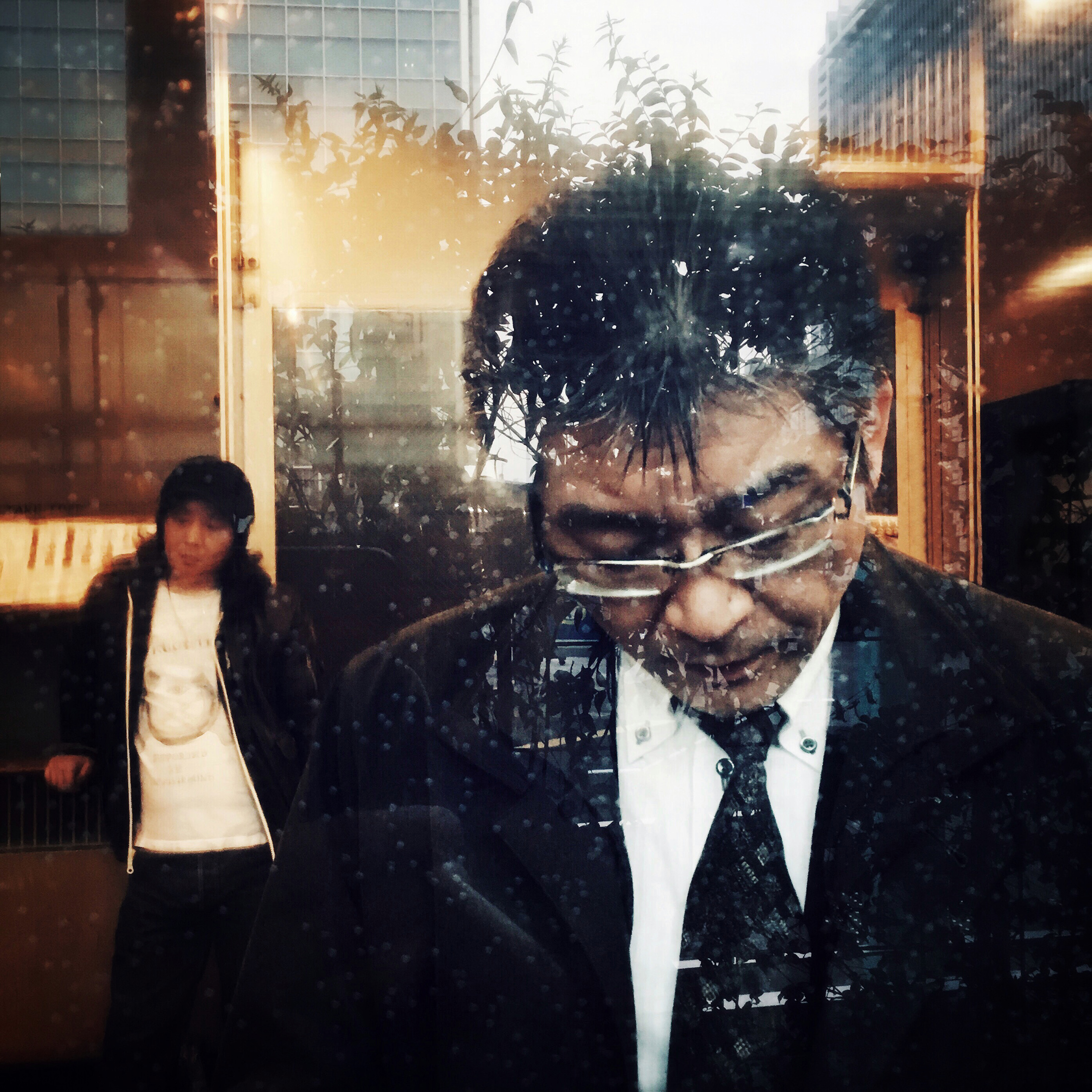
BW: What inspires you?
AK: I’d have to say it is the mood I perceive in any given subject or scene, and how that resonates with me. You might say my senses and my shutter button are triggered when I experience a certain emotional response to that moment. This is not unlike a response to great music, art, architecture, or the likes. I’m particularly drawn to geometry, form, motion, and what I perceive to be the ‘perpetual sense of slight imbalance that keeps us on our toes’.
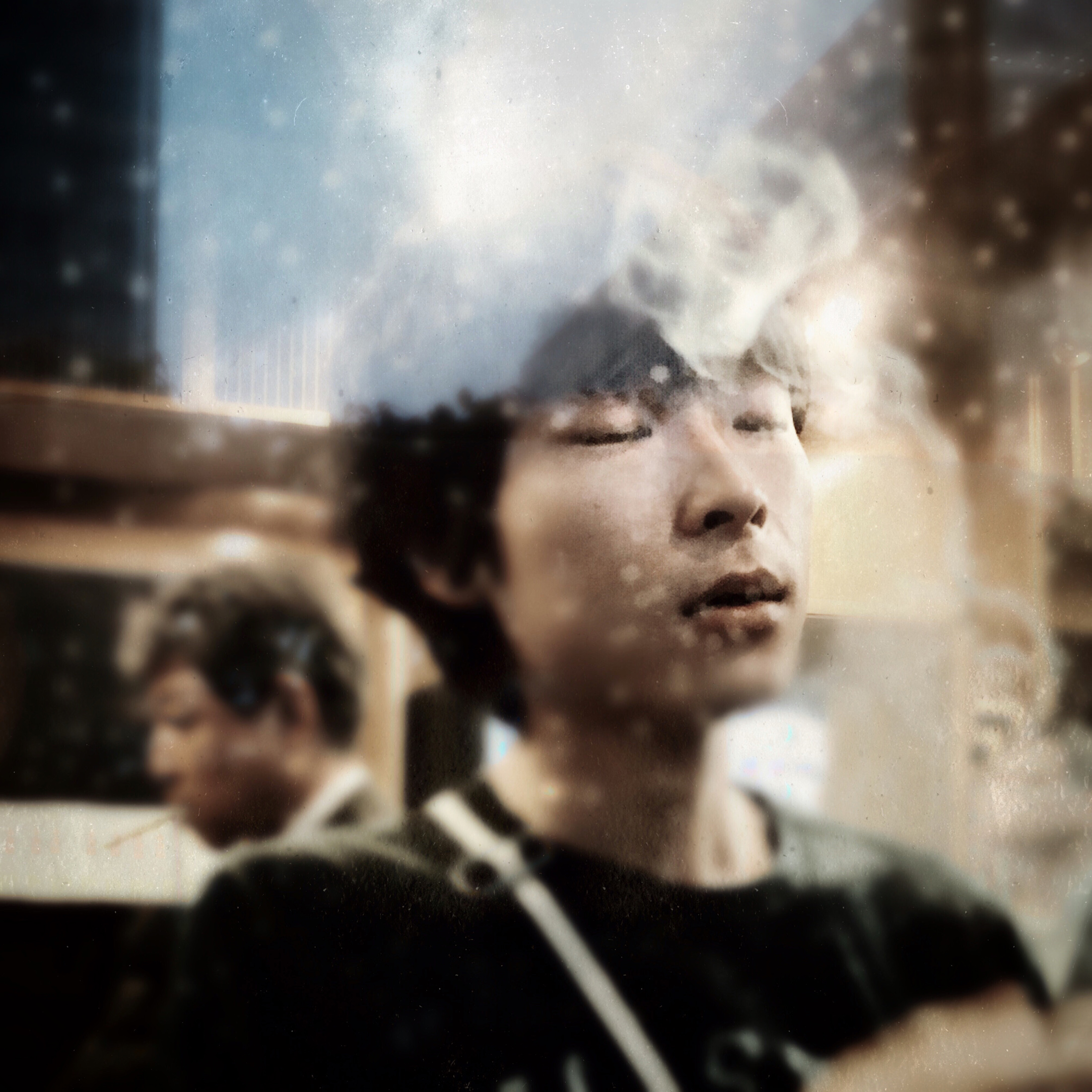
BW: In what ways do you express your creativity?
AK: I simply seek to convey the emotion or mood of the moment as I felt it when taking the shot. That said, I enjoy leaving interpretation to the viewer, and I learn a great deal from the reactions offered by others. While not related to the series featured here, this serves as impetus to create some of my more abstracted pieces, as these lead to a wider variety of interpretations.
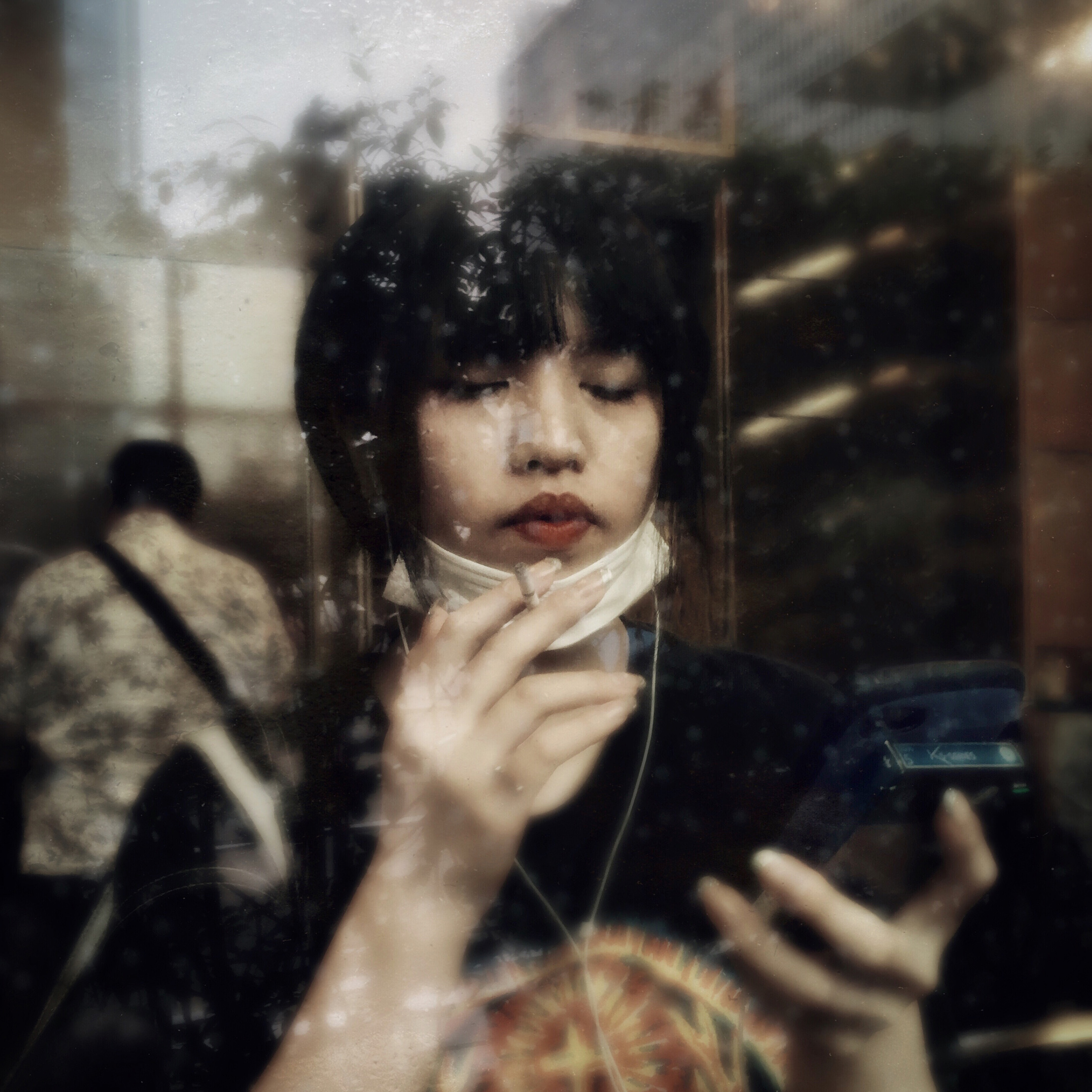
BW: Are there any specific design periods, photographers or artists who have an influence on your work?
AK: I would be at a loss to try suggesting that any specific influence was in play when shooting the series featured in this interview. That being said, we are all products of our experience and my aesthetic has surely been shaped over the years partly as a reflection of the many photographers, artists, musicians, friends, and others who have always fascinated me.
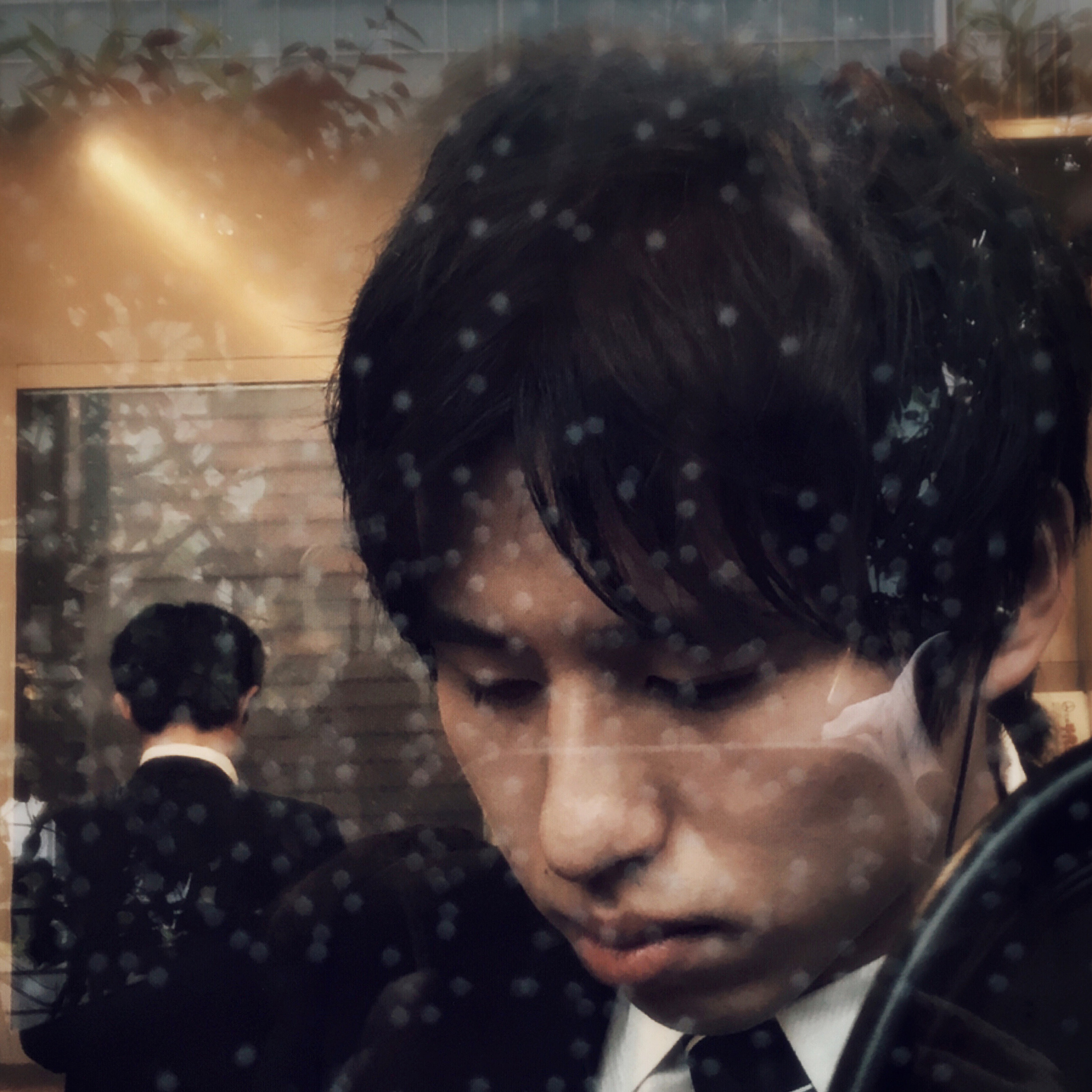
BW: In general, what are you trying to communicate with your work?
AK: While I prefer to leave the interpretation to the viewer, I can speak to the mood I was aiming to capture. I picture that as a moment when each subject manages to briefly disconnect form the bustle of the big city and their busy schedules and indulge in a moment of deep reflection. I hope on the more successful images, the expression as captured is one that will resonate with the viewer, whether it works better in color or in monochrome, because each step layered on during the editing process brings the photo to another visual dimension.
Still, the magic always happens and intuition always speaks to me in the end and whispers into my ear the ideal completion point to the created frame.
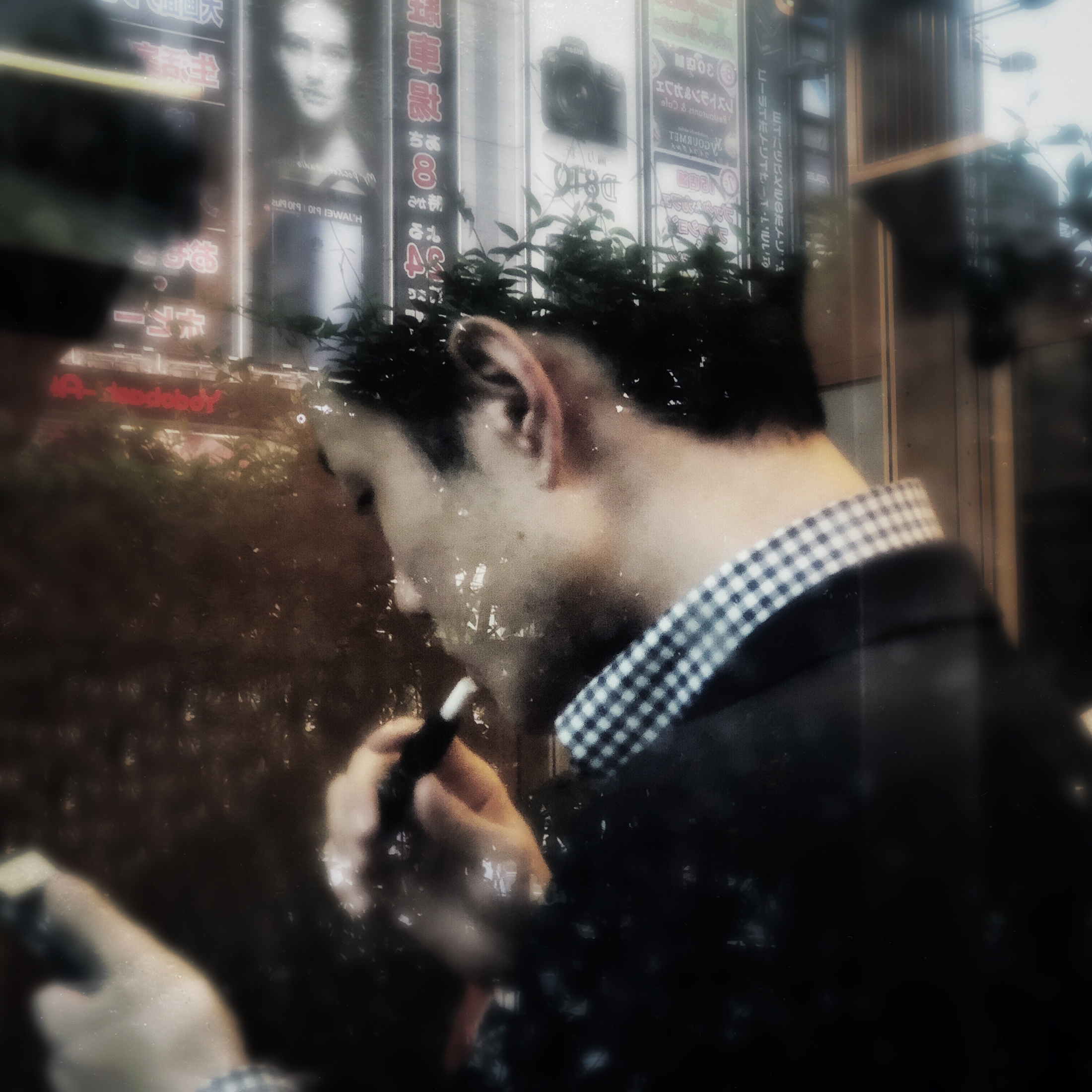
BW: How do you know when a work is finished?
AK: As far as this series is concerned, it was quite straightforward. My goal was mostly to just balance the tones and adjust the lighting a little. That made it relatively easy to decide when I had achieved my desired result.
On a more general level, the obvious answer is that it involves little more than trusting one’s own gut feeling. Sometimes the image just speaks to the photographer. Other times we wind up creating multiple versions and are still left unsure which is the one we wish to publish. Regardless, I believe the decision generally becomes less strenuous as we gain experience in both the creative process and the post-processing.
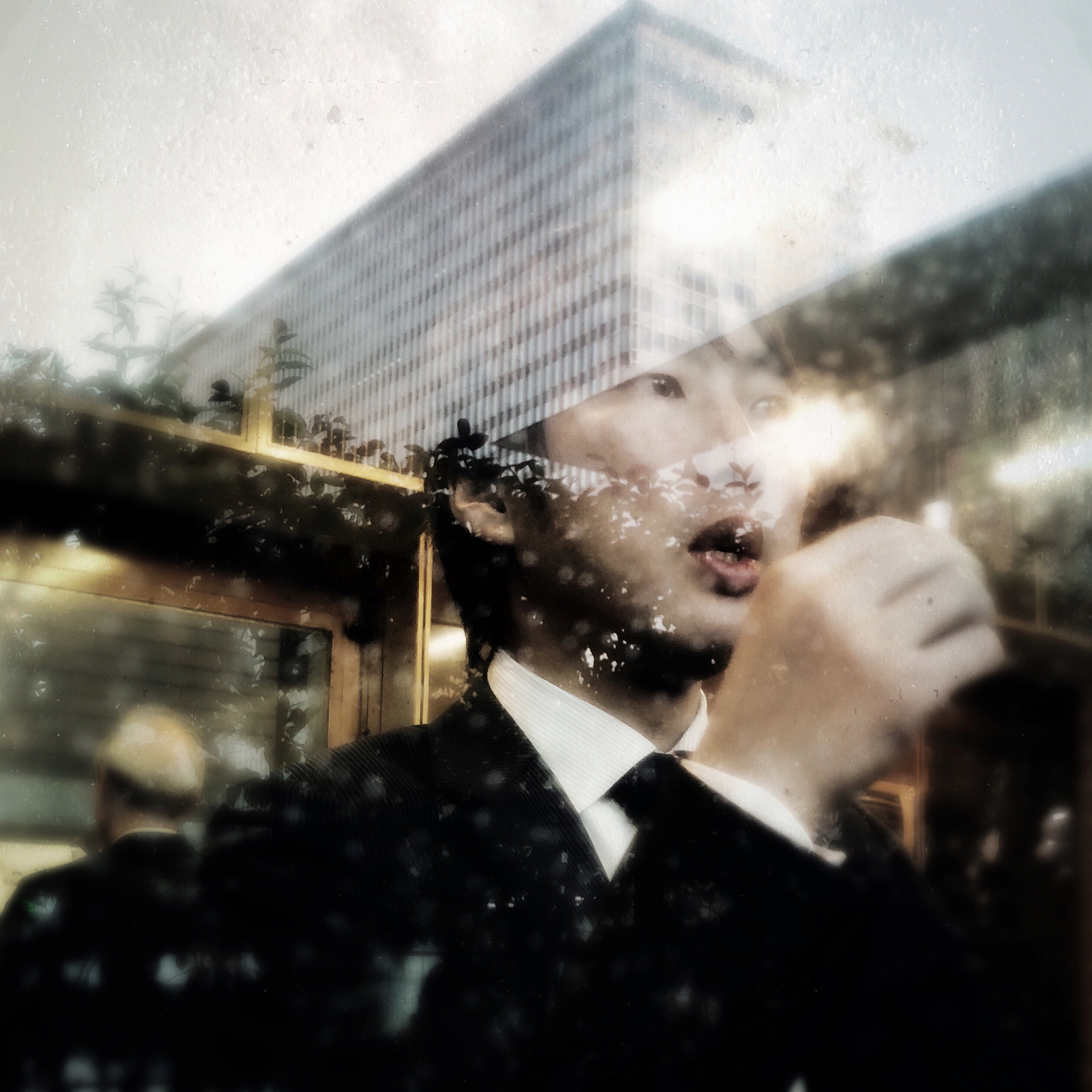
BW: What drew you to the particular subject matter in these “window photos?”
AK: I happened upon the window through which I shot the entire series by chance one day after attending a monthly meeting in Tokyo’s Akihabara (“Electric Town”) district. Though not completely satisfied with my first shot, I sensed that this long window could afford me the opportunity to take on a new challenge. I had long been thinking to shoot a series that more clearly captured a close look at the facial expressions of my subjects on the streets. I had always felt shy about doing so in the past, so this was something I took on to get out of my comfort zone, push the boundaries and maybe grow a little.
Even better, I found the subjects captured through that window sparked the same emotional response in me that inspires my other street work, so could carry over the mood I like to convey. And, the reflections seen in the window at various times and from differing angles played well toward achieving the depth I was hoping to convey.
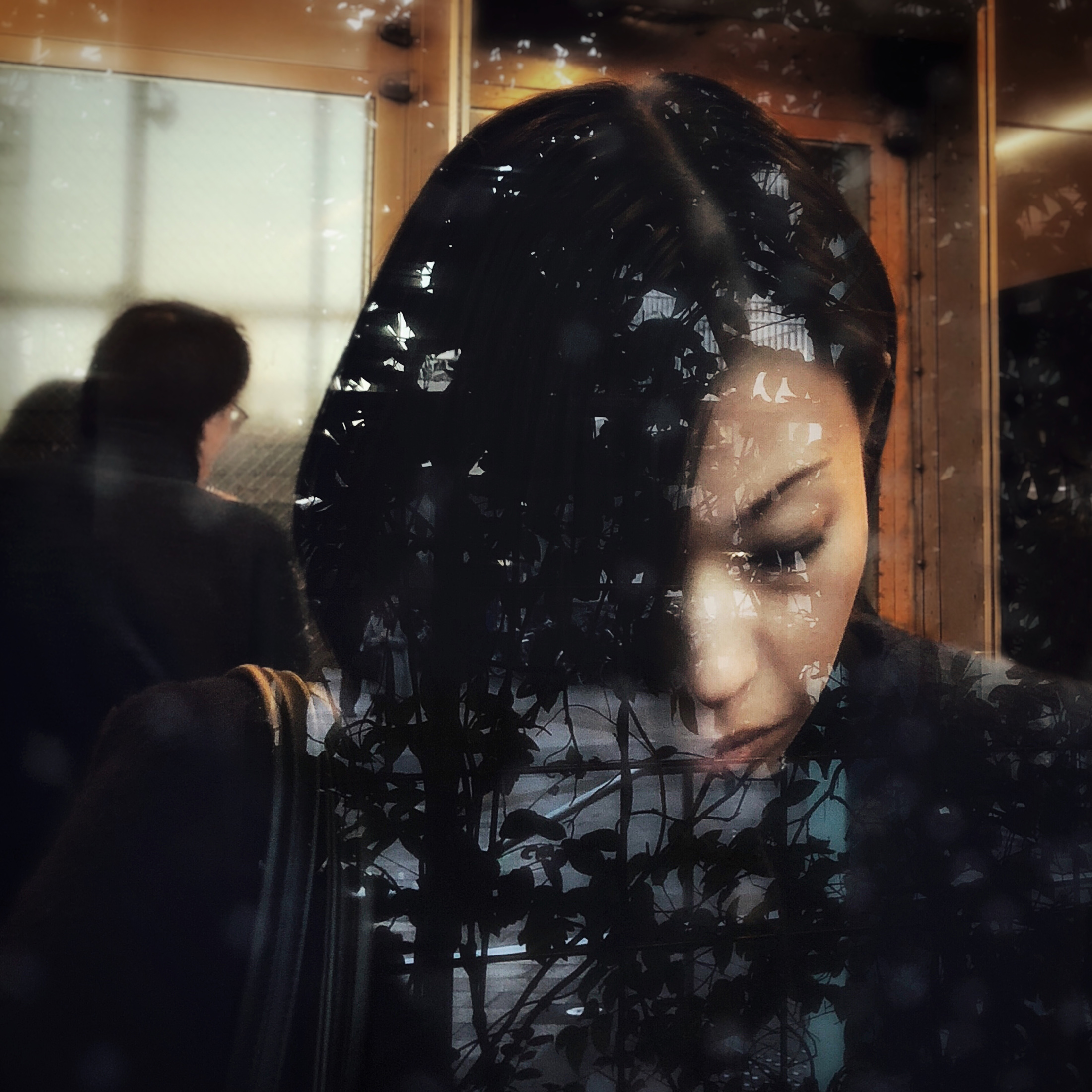
BW: While I understand that these images were all captured at the same window, were they all shot from exactly the same location? What creative decisions did you make on the spot / in the moment?
AK: The (multi-pane?) window is a few meters in length. I stood in slightly different locations along the outside and shot from different angles (to my left or right) to get the capture and reflection I was after. After that, the most critical thing would be the timing. In other words, to take advantage of the brief moment I had to capture the subject’s expression when it really grabbed me.

BW: Do your subjects know that you are photographing them?
AK: I don’t think any of my subjects realized I was photographing them, even though I was standing only inches away on the other side of a pane of glass. Each portrait had to be completely candid, so it was important to me that my subjects go about their business without being distracted by my actions. Even so, it is possible one or two might have clued in after the fact. I had my trusty “photog” business card ready in case I had to answer questions. All I can say for certain is that none approached me afterward or contacted me later.
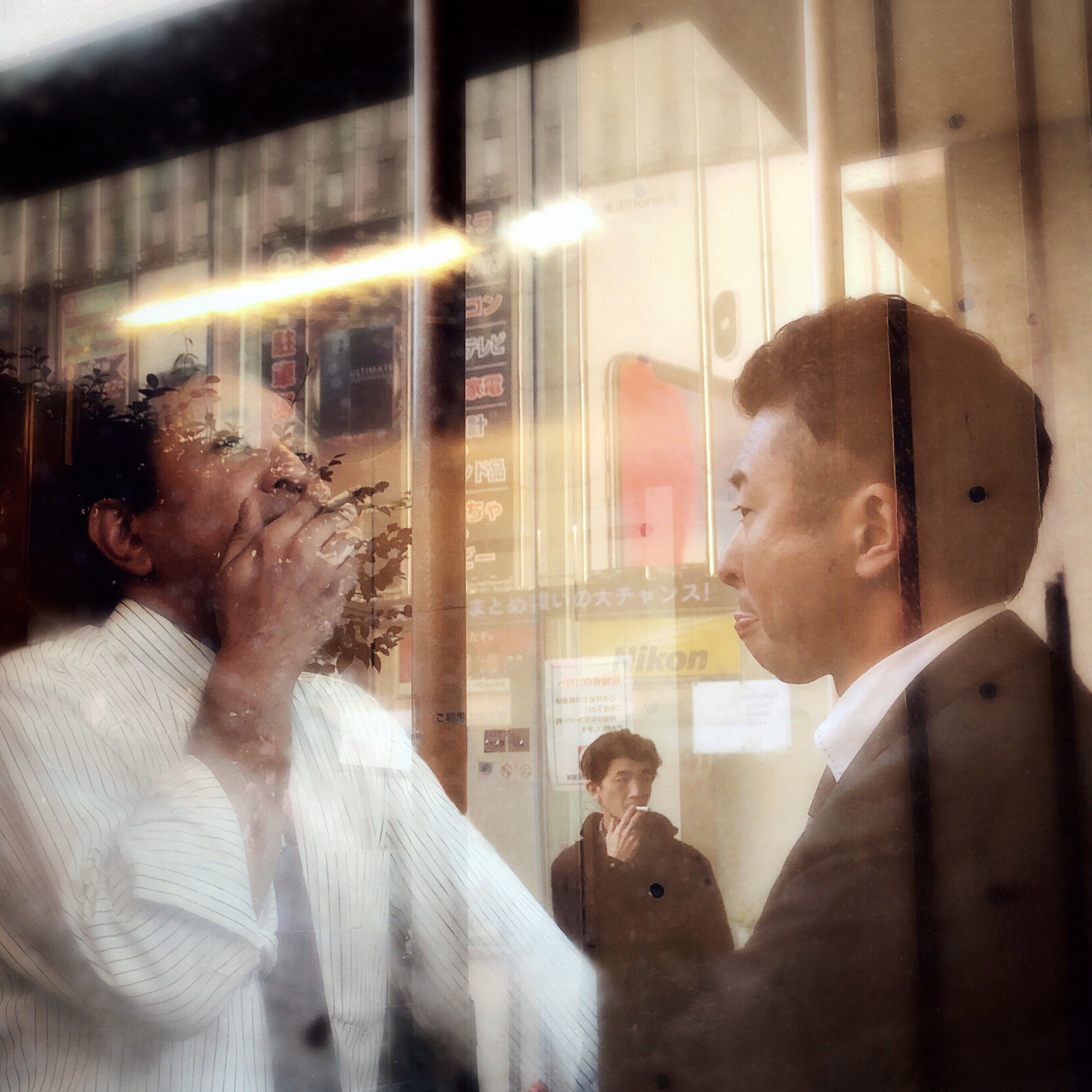
BW: You’ve lived and worked in Japan for some time. Tell us about your experiences there and take on the people and culture.
AK: Mine is maybe not the typical expat experience and, after living so many years in Japan, that’s a question I feel is a too big to handle here. I could go on about my experiences for far too long, but don’t think those tales will add much to a discussion of this series of images.
BW: What do you feel this selection of photos reveals about where you live?
AK: I feel this series could be shot in any large city. More than making a statement about Japan or the Japanese people, my focus is more on the individual disconnecting from “the matrix” for a minute to reflect, maybe dream, and just maybe recharge enough to make it to the next appointment. My subjects happen to be Japanese, but I believe the mood is what we might find in any major metropolis.
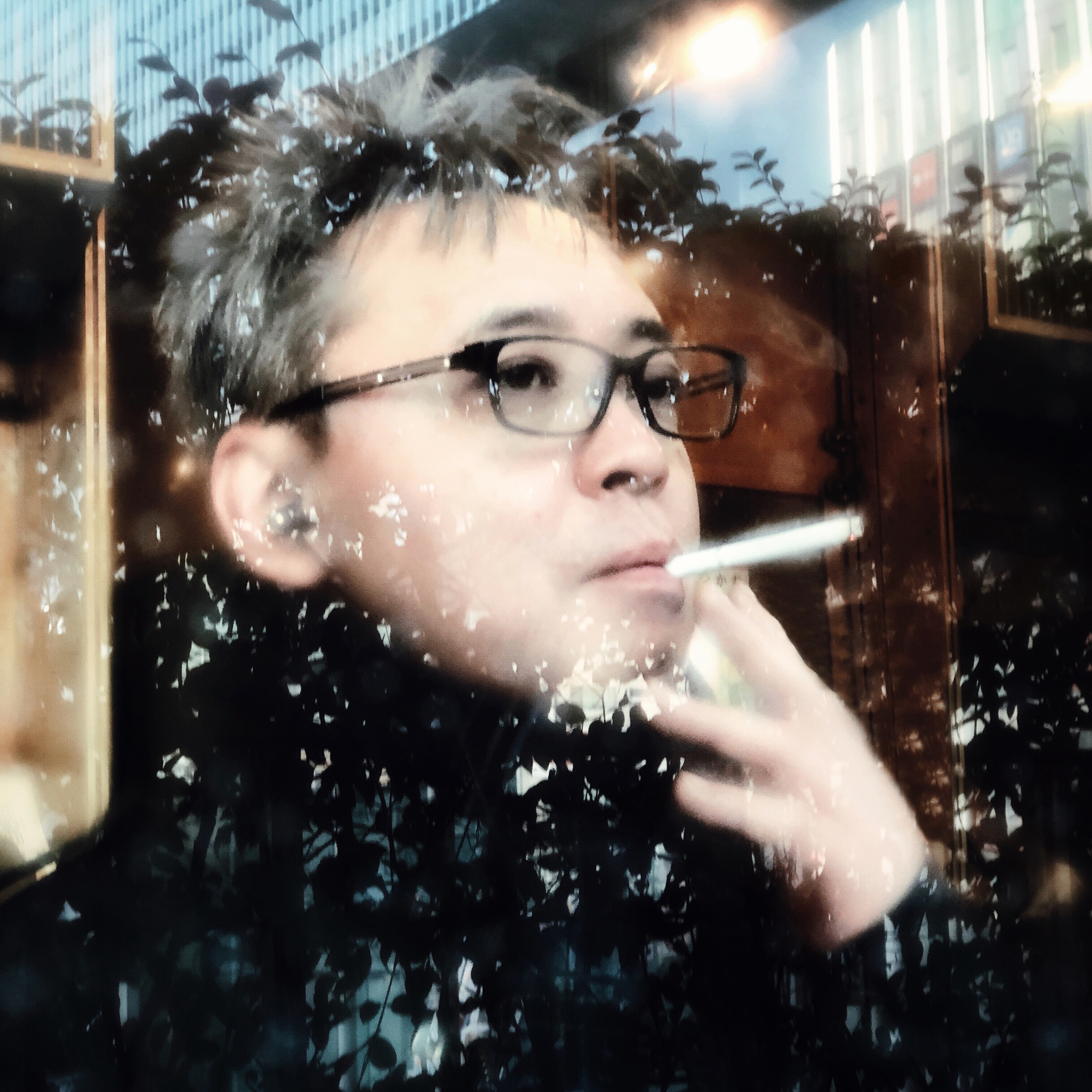
BW: We’re featuring a particular series here, but you have shown interest in other subjects and techniques. What are those?
AK: The majority of my work involves candid shots taken on the streets. A good percentage of those are rendered unaltered as observed, (other than for tonal corrections, etc.), with maybe half being in color and the rest in black & white. Others include a series of somewhat abstracted images created using other capture techniques. One example is an ongoing series of images for which I intentionally use a slow shutter speed and control camera shake for effect. (That was the subject of my tutorial for The Art of iPhone Photography.) “Reconstructed architecture” is another area I enjoy exploring in an ongoing series. For these, I take a single image of an architectural form, deconstruct it, manipulate the parts, and then reconstruct them to create a different piece of architecture. This gives me plenty of time to enjoy some good old fashioned “apping” and create something different.
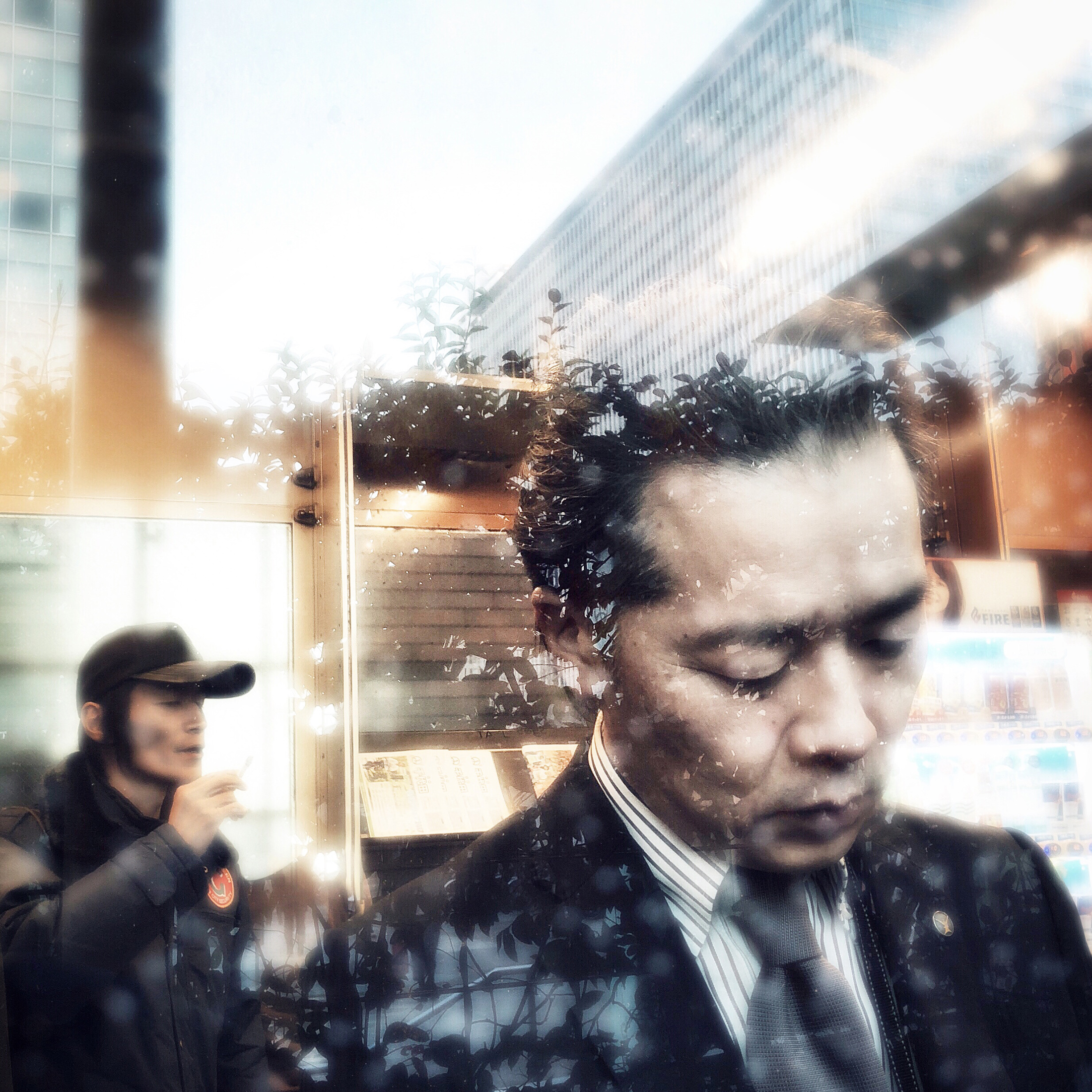
BW: What iPhone apps do you use in your work, particularly in this series? Any on the desktop?
AK: Let’s start with the series. I’m pretty sure all were captured using Hipstamatic. Post-processing was done using a combination of Hipstamatic, Snapseed, and sometimes Mextures as well to affect the lighting and tone.
I prefer using only iOS apps to edit my mobile photos, so never use the desktop for that purpose.
Other capture apps I use include ProCamera, Halide, Slow Shutter, and Apple’s default Camera app. As for many of us who experienced the halcyon days of downloading and experimenting with pretty much every new app that came along, partly to compensate for deficiencies in the cameras on the early smartphones, I long ago settled into using fewer apps for post-processing. Of late, I tend to use Snapseed, Hipstamatic, Mextures and VSCO for adjustments. Touch Retouch comes in handy from time to time, and SKWRT helps with lens distortion cand perspective correction.
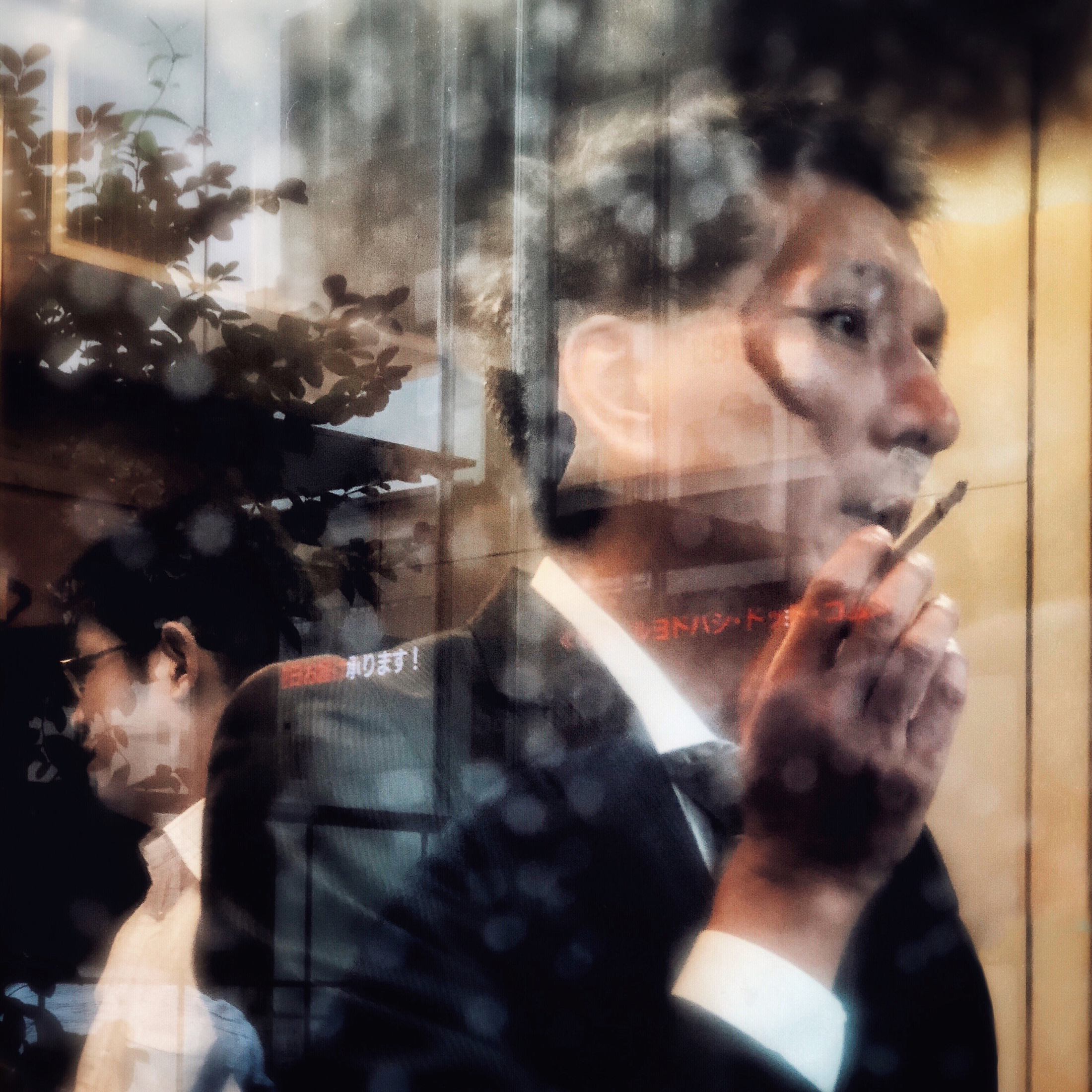
BW: What kinds of creative patterns, routines or rituals do you have?
AK: Good question. I don’t follow any particular ritual beyond making sure I have whatever equipment I feel I will need with me. As it applies to the series featured in this interview, the only pattern or routine was to visit the window regularly and to time those visits to hopefully coincide with the hours (minutes?) when the light was just right to produce the reflections I was hoping to include as part of the composition. After that it was a matter of waiting patiently until I found a subject who interested me, and who slipped deep enough into their own world that they would not react to me taking a photo. I normally landed only a couple of shots per visit, and those I reviewed later on at home.
BW: What advice would you have for someone aspiring to seriously pursue photography on their mobile phone?
AK: The best advice is to shoot and then shoot some more as you hone your technique and develop your voice. But only do that because you want to do it for yourself and you can’t get enough of it. Don’t hesitate to read up on technique and theory, and be sure to view the works of the masters for inspiration. And don’t rush to publish images – be a harsh editor.
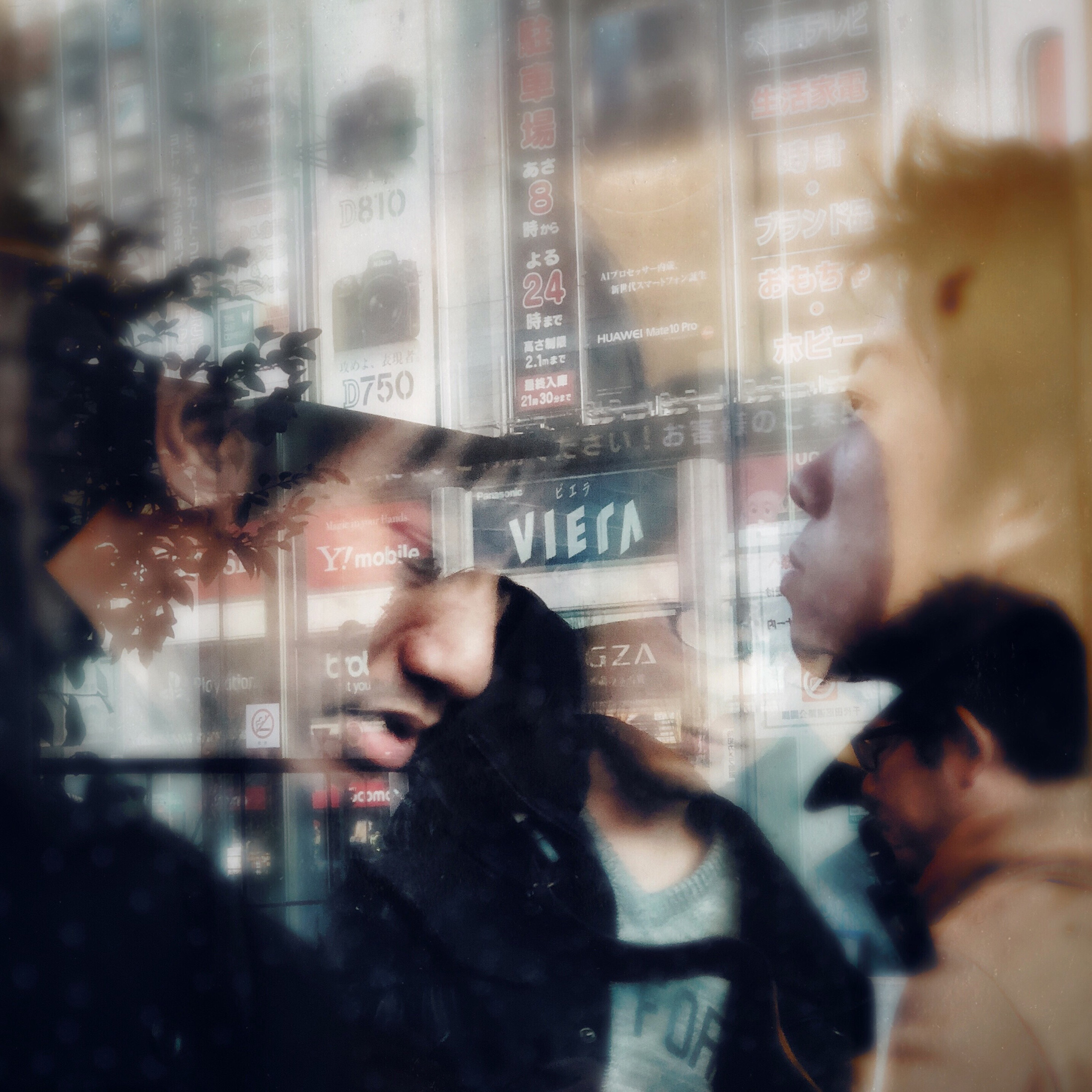
BW: What next? What are your plans with your next phase of creative expression?
AK: Basically, my plans are to keep on exploring the possibilities of the latest smartphone cameras and continue capturing what moves me. I do have a few projects in mind, but am happy to follow whatever path my passion takes me down next.
ALAN KASTNER
ABOUT THE INTERVIEWER
Bob Weil is a former marketing exec and practicing mixed media digital pictorialist living in Omaha, Nebraska. He has won numerous awards for his work and has exhibited in New York, Los Angeles, Canada, Italy and Portugal. He is a published author and teacher on digital art subjects with 2,400 students in 52 countries. Bob co-authored The Art of iPhone Photography with Nicki Fitz-Gerald for Rocky Nook Photography Books.




